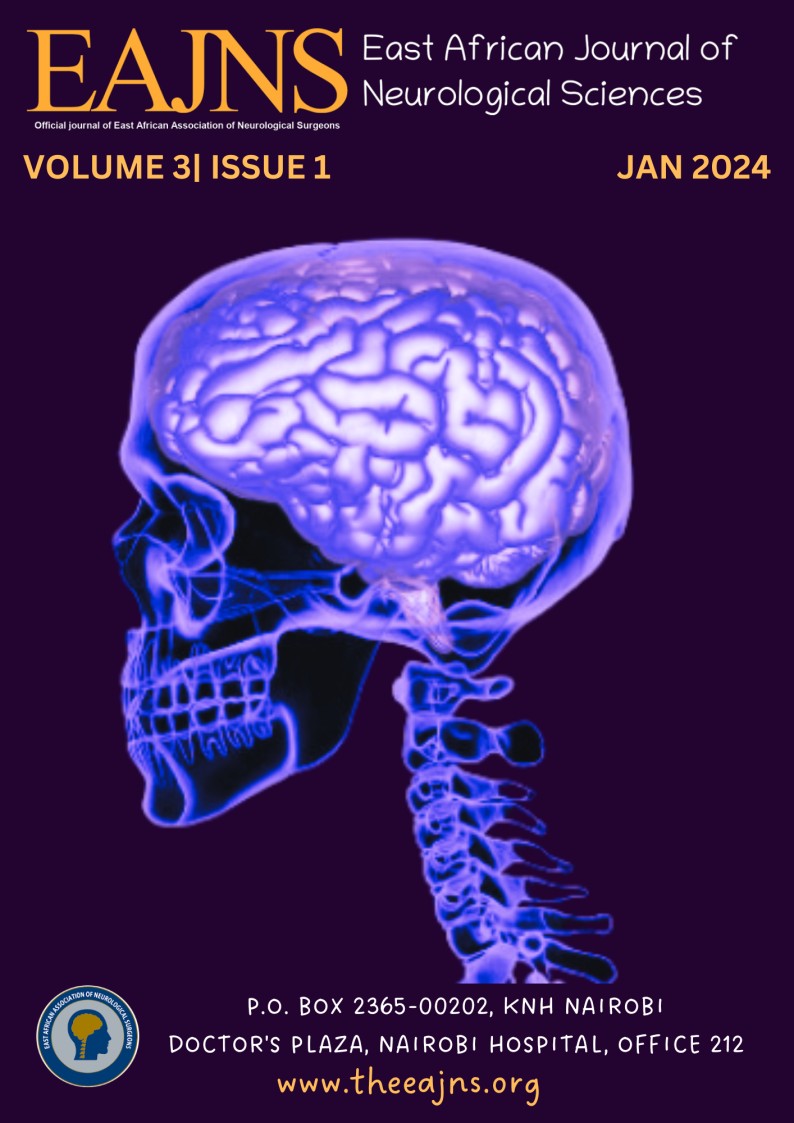Main Article Content
Blood Pressure Variability and Shifting in Clinical Outcome Amongst Stroke Patients in Southwestern Uganda
Abstract
Background: Higher blood pressure variability is associated with shifting towards worse outcome among stroke patients.
Methods: We conducted a prospective cohort study of CT head confirmed ischemic and hemorrhagic stroke admitted within 7 days of onset of motor weakness. Blood Pressure Variability (BPV) indice; Standard Deviation (SD) of systolic and diastolic Blood pressure (BP) between 0 and 7 days after admission was calculated with subsequent modified Rankin Scale (mRS) score on day 14 and day 30 post-stroke. Ordinal logistic regression was fitted to determine the adjusted odds ratios (aOR) for shifting towards worse clinical outcome at 30 days among patients with stroke that had survived beyond 14 days with 95% CI and p value<0.05 used as statistical significance.
Results: Out of 120 patients, 32 patients passed on by day 14, 88 patients survived beyond day 14. Fourteen patients had a 1 point shift in MRS towards worse outcome at 30 days of stroke onset. Blood pressure variability SD systolic BP tertiles (2&3) had aOR: 1.6, p= 0.306 (95%C.I: 0.6-4.1) and 5.8, p = 0.002 (95%C.I: 1.9-17.5) respectively. NIHSS≥16 had aOR=3.8 (95%CI: 1.5-9.6) P=0.004 and time to presentation ≥ 3 days had aOR=2.8 (95% C.I:1.2-6.3) p=0.013.
Conclusion: Higher BPV (tertile 3), late presentation ≥ 3 days and high NIHSS conferred statistically significant odds of shifting towards a bad functional outcome.







